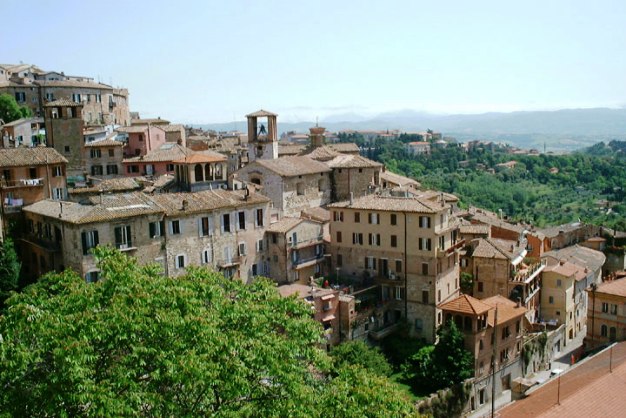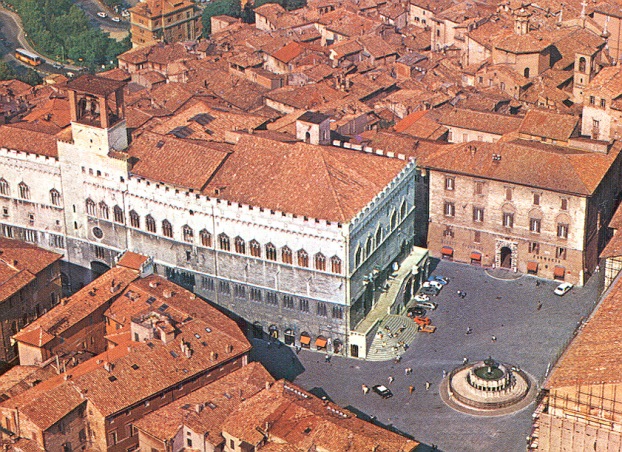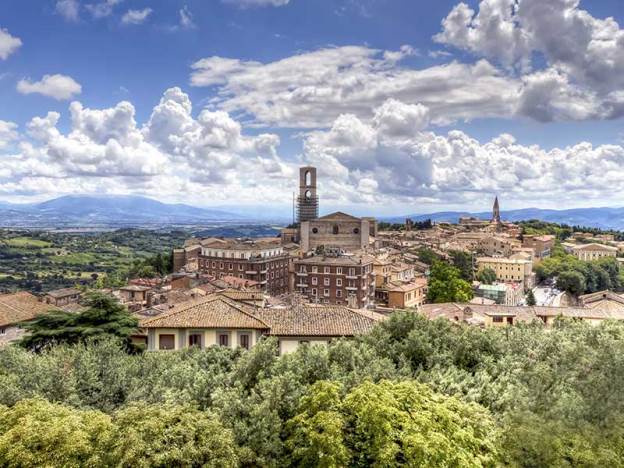Umbria Carnevale Season The city of Sant’Eraclio, Umbria Italy is located some 25 miles (40 kilometers) southeast of the regional capital, Perugia. Its Carnevale was originated back in 1542 by the Olivetani friars of Mormonzone, who lived in a nearby convent that has long been abandoned. These forward-looking friars felt that the local populace deserved their own merry-making on the streets to balance the local gentry’s exclusive palace parties. Good for them!

Originally Sant’Eraclio Carnevale meant parades of oxen-drawn carts festooned with branches and flowers, and the people dancing and singing to the music of flutes and trumpets played by men and women in the traveling carts. But during the Seventeenth Century the Church decried this Carnevale as sinful and banned it.
I am under the impression that the local gentry’s exclusive palace parties were not banned. About a century later Carnevale was allowed to resume, but in this region only in Sant’Eraclio. Carnivale continued here without interruption until the Second World War.
The Masquerade was held on Shrove Tuesday but because of post-war security measures forbidding the wearing of masks in public it didn’t last too long. Todays’ allegorical floats are made from papier mache and the street parade is accompanied by dancing and singing, as in centuries past. And the local gentry, as everyone else, still has parties, but perhaps not in the palaces.

That’s how the hilltop village of Acquasparta situated in southern Umbria describes its annual event. The floats and masks evoke cartoons and kids’ films, and there are free rides on trains, carriages, merry-go-rounds and a double-decker bus.
It’s a beautiful carnival and the local food specialties are a major attraction. Unfortunately, we can’t say the same about the late Renaissance Palazzo Cesi, now belonging to the University of Perugia, which is slowly being renovated. Note to the local gentry, how about opening up your pocketbooks and the Palazzo?

Spoleto, a city of some 40 thousand, about 40 miles (60 kilometers) southeast of Perugia has been holding a Carnevale for more than 180 years although they did manage to miss five years in the 1980s. It’s pretty standard fare with allegorical floats, masked paraders and musicians, and a procession from the historic city center to Piazza Garibaldi, named for the hero of Italian Unification. You may prefer the Guardea Carnevale in that town of 2 thousand located approximately 35 miles (60 kilometers) south of Perugia.
It has a reputation for excellence and offers several nighttime events. Other Umbrian localities sporting Carnevale events include San Sisto (with a nighttime parade), Ponterio (they call it Carnevalandia), and Todi.

